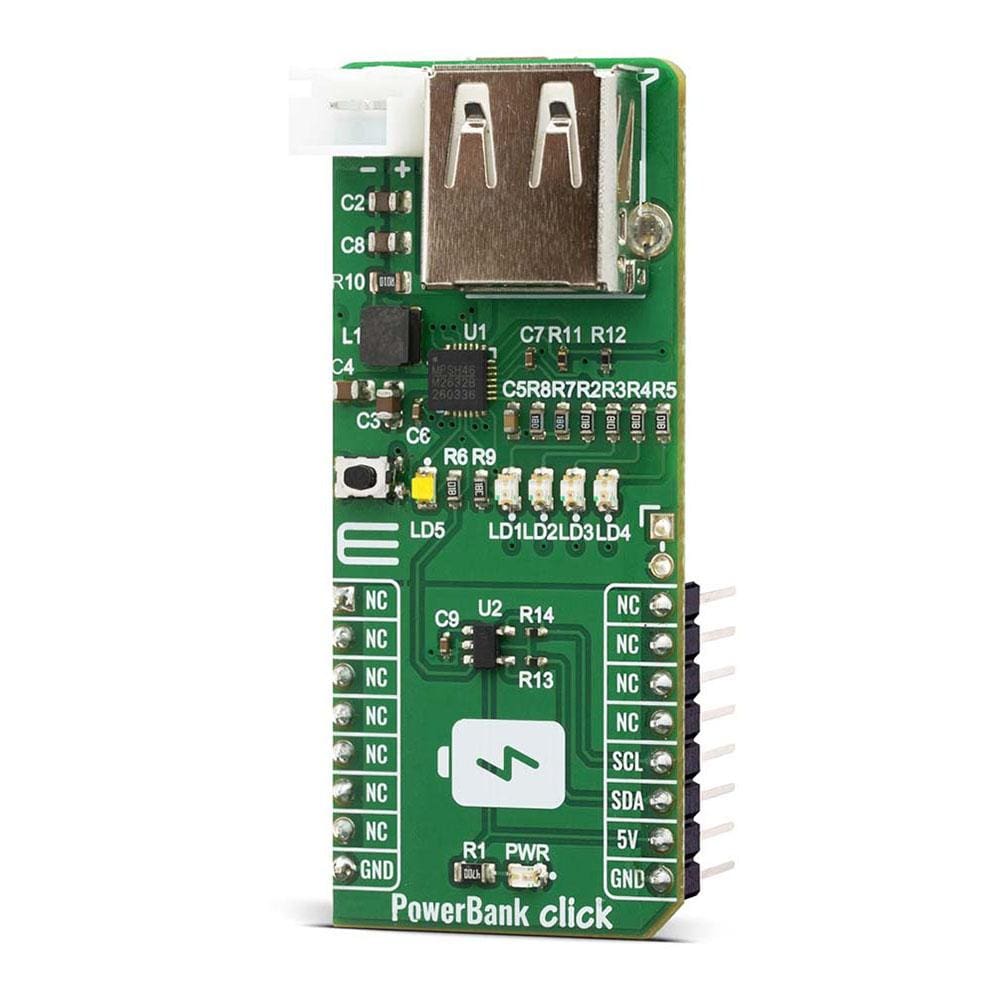
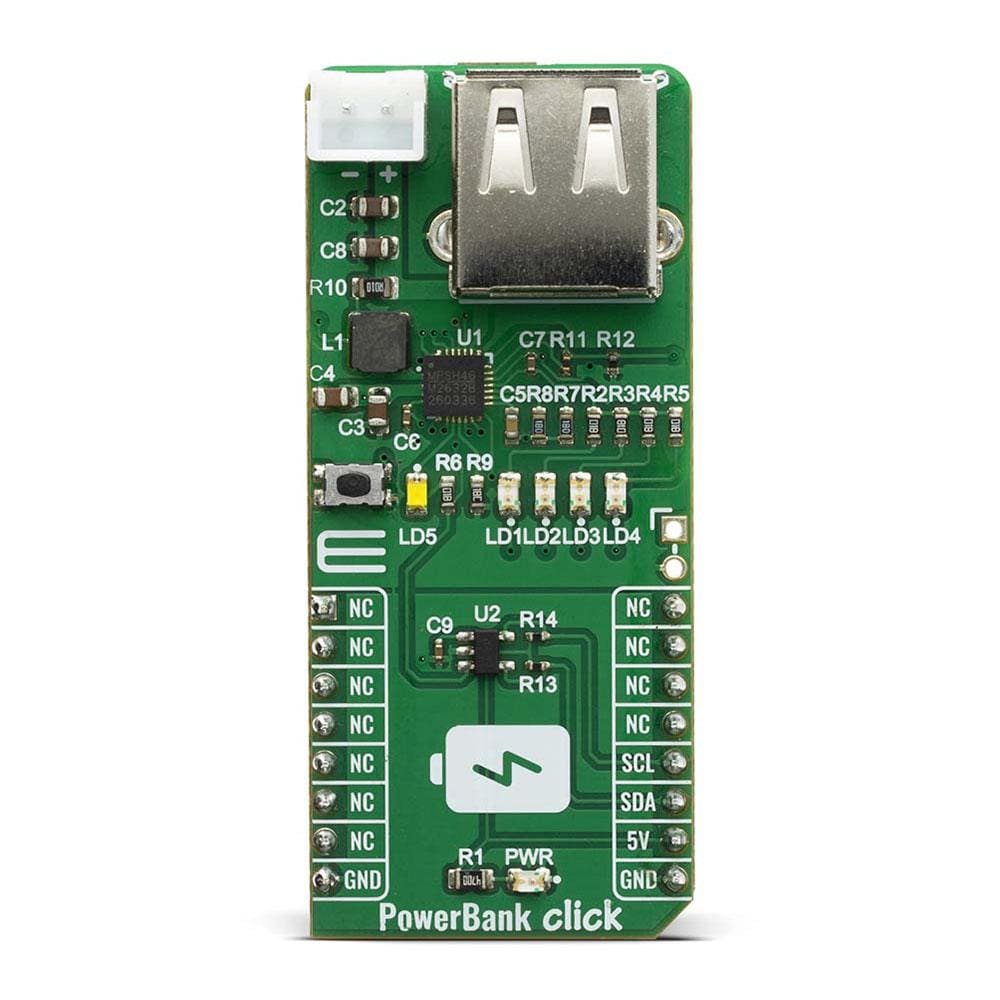
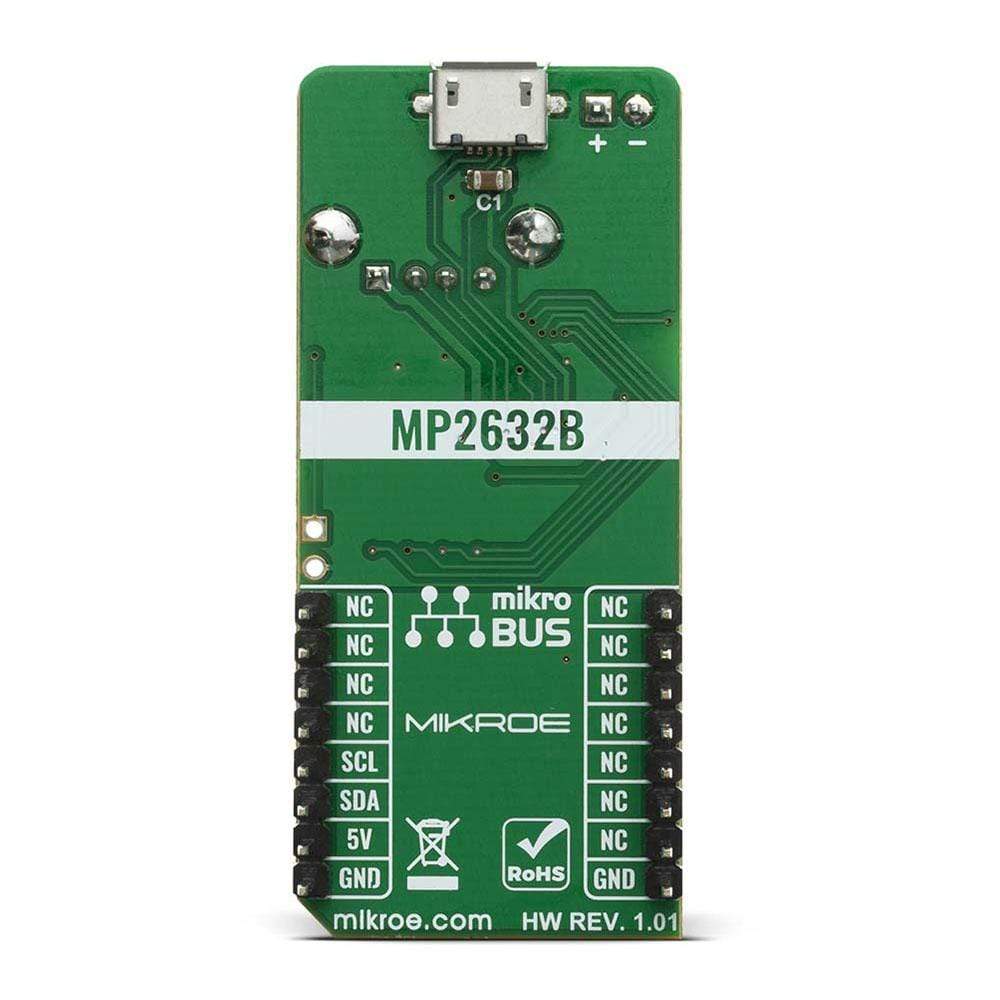
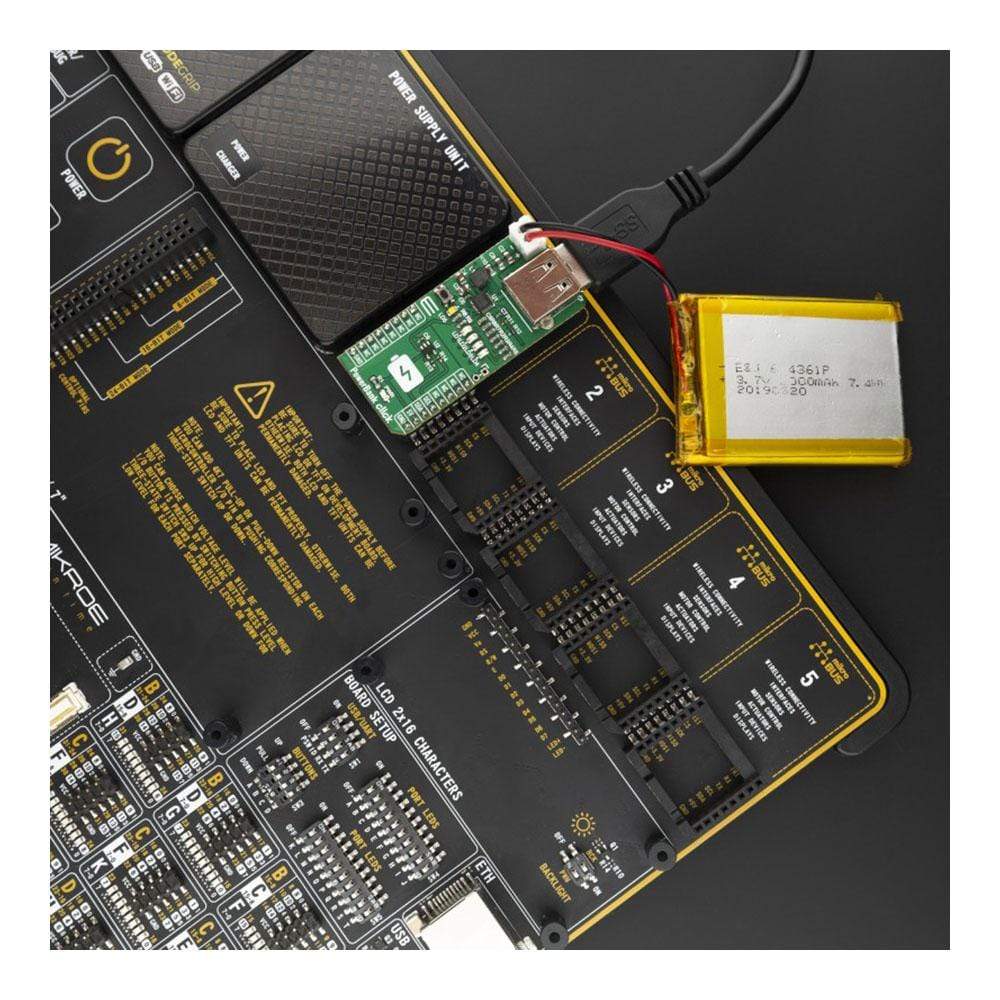
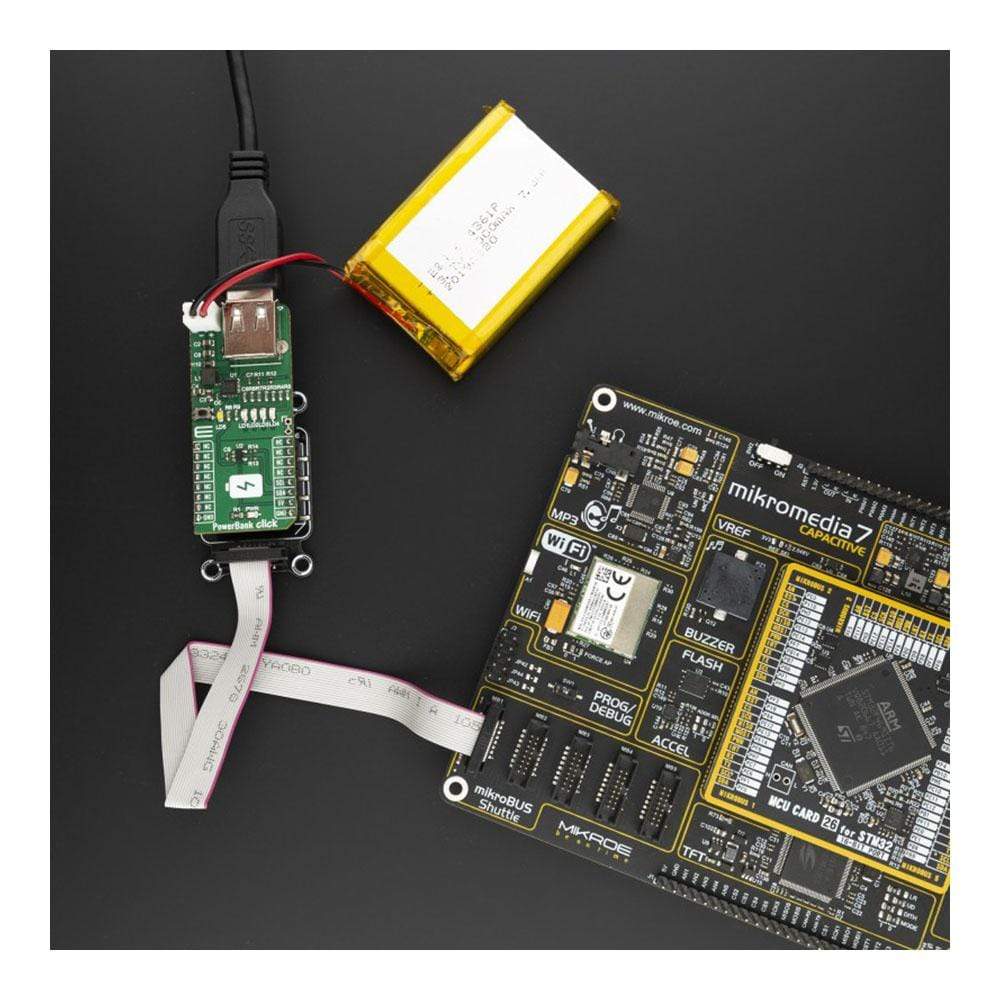
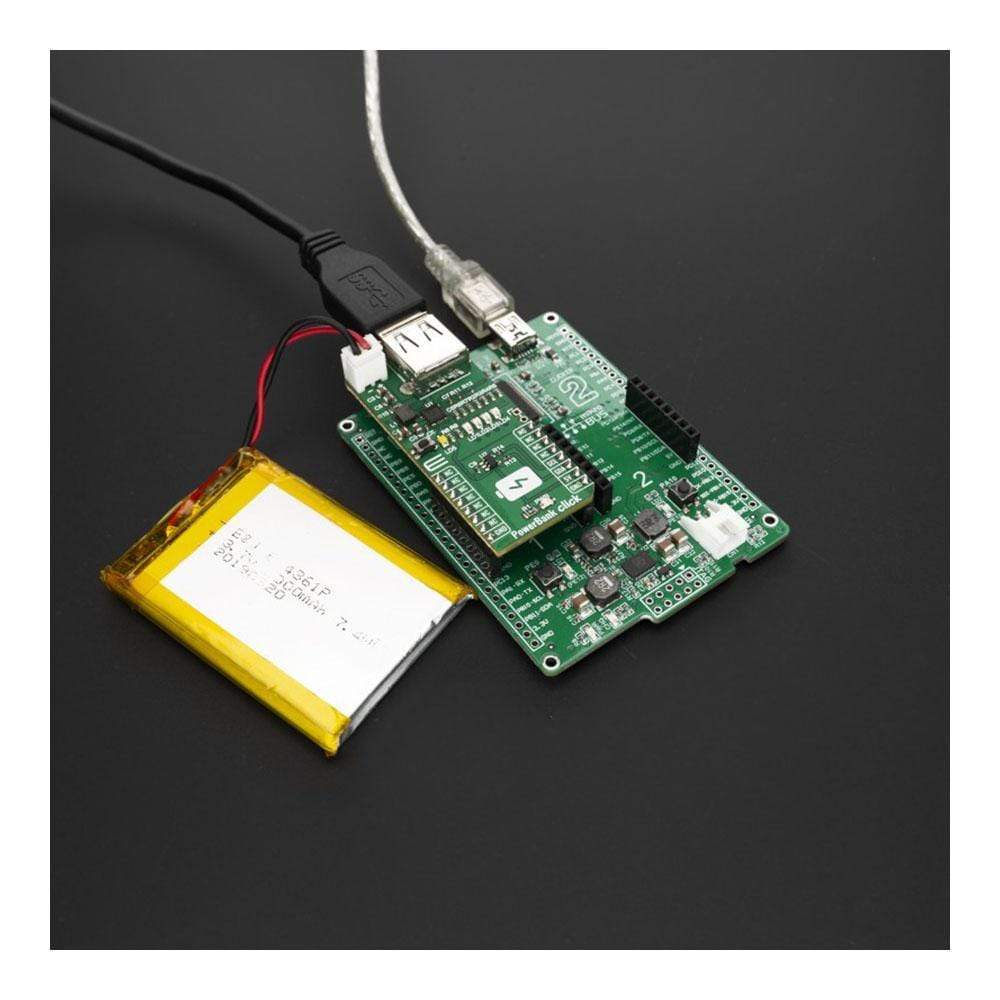
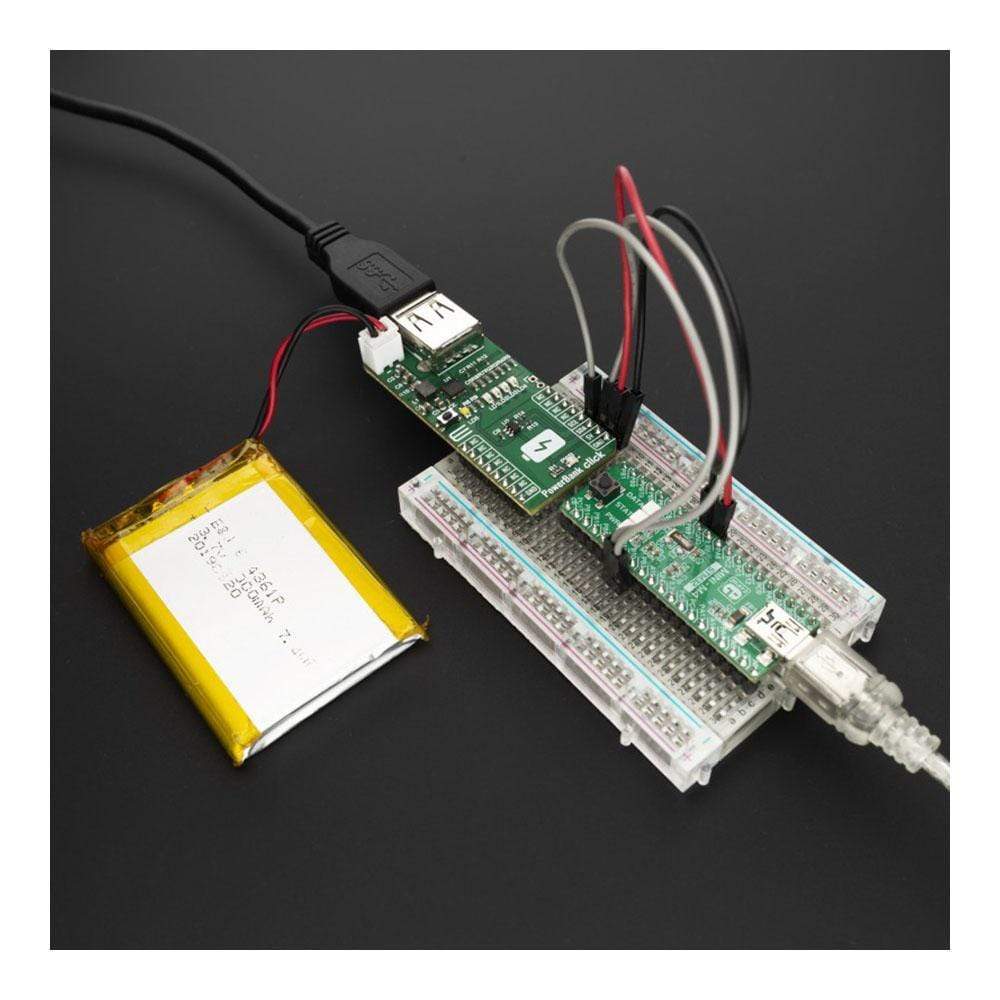
Overview
The PowerBank Click Board™ is a USB charging expansion board that can be used for creating power bank devices or adding a charging option to your device. For battery charging management, this board uses MP2632B a highly integrated 3A Lu-ion and Li-polymer battery charger from Microchip. In addition to the battery charger, PowerBank Click also has an MCP3221 analogue to digital converter, which is serving for monitoring battery voltage over the I2C interface. Besides battery charging and monitoring features, this board also has an operation section button, notification LEDs for operational mode selection and battery status. Power banks are popular for charging USB charged devices and can be used as a power supply for various USB powered devices such as lights and small fans.
The PowerBank Click Board™ is supported by a mikroSDK compliant library, which includes functions that simplify software development. This Click Board™ comes as a fully tested product, ready to be used on a system equipped with the mikroBUS™ socket.
Downloads
La PowerBank Click Board™ est une carte d'extension de chargement USB qui peut être utilisée pour créer des appareils de banque d'alimentation ou ajouter une option de chargement à votre appareil. Pour la gestion de la charge de la batterie, cette carte utilise MP2632B, un chargeur de batterie Lu-ion et Li-polymère 3A hautement intégré de Microchip. En plus du chargeur de batterie, PowerBank Click dispose également d'un convertisseur analogique-numérique MCP3221, qui sert à surveiller la tension de la batterie via l'interface I2C. Outre les fonctions de charge et de surveillance de la batterie, cette carte dispose également d'un bouton de section de fonctionnement, de LED de notification pour la sélection du mode de fonctionnement et l'état de la batterie. Les banques d'alimentation sont populaires pour charger des appareils chargés par USB et peuvent être utilisées comme alimentation pour divers appareils alimentés par USB tels que des lumières et des petits ventilateurs.
Le PowerBank Click Board™ est pris en charge par une bibliothèque compatible mikroSDK, qui comprend des fonctions qui simplifient le développement logiciel. Ce Click Board™ est un produit entièrement testé, prêt à être utilisé sur un système équipé de la prise mikroBUS™.
| General Information | |
|---|---|
Part Number (SKU) |
MIKROE-4082
|
Manufacturer |
|
| Physical and Mechanical | |
Weight |
0.019 kg
|
| Other | |
Country of Origin |
|
HS Code Customs Tariff code
|
|
EAN |
8606018717279
|
Warranty |
|
Frequently Asked Questions
Have a Question?
Be the first to ask a question about this.







